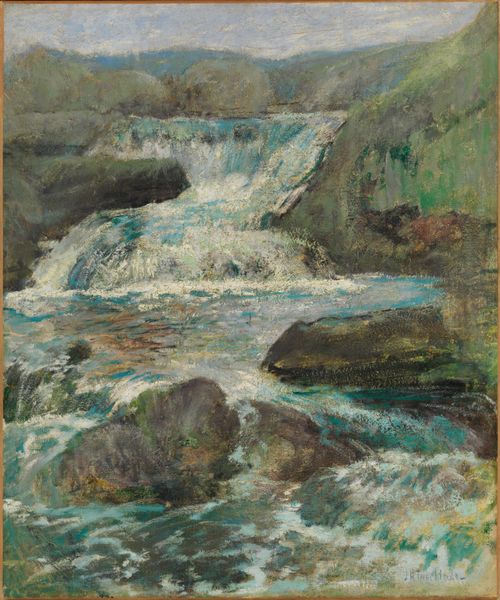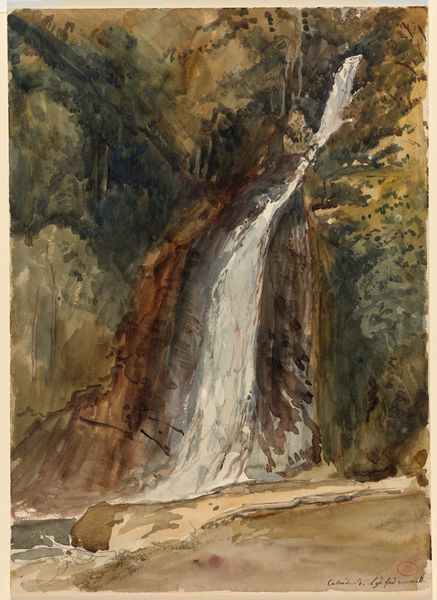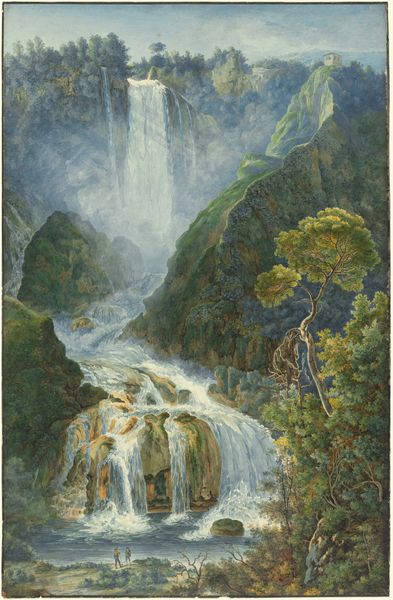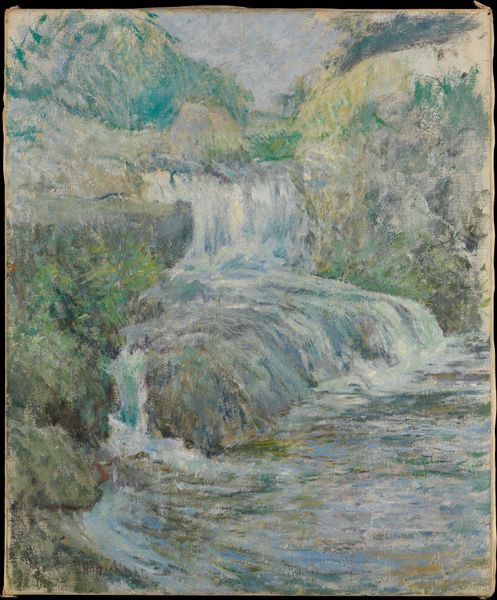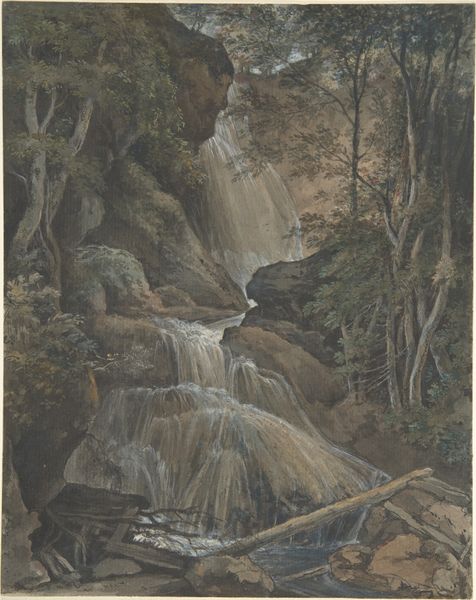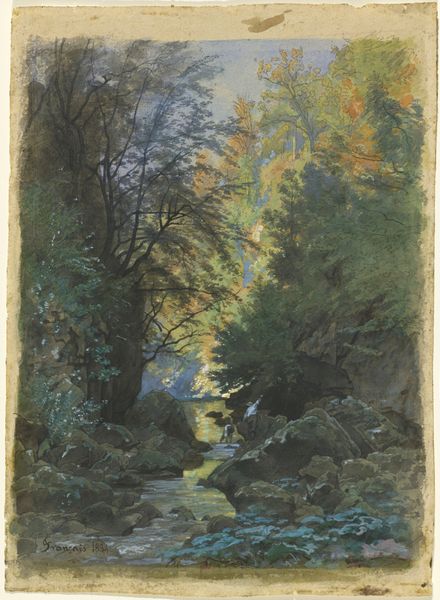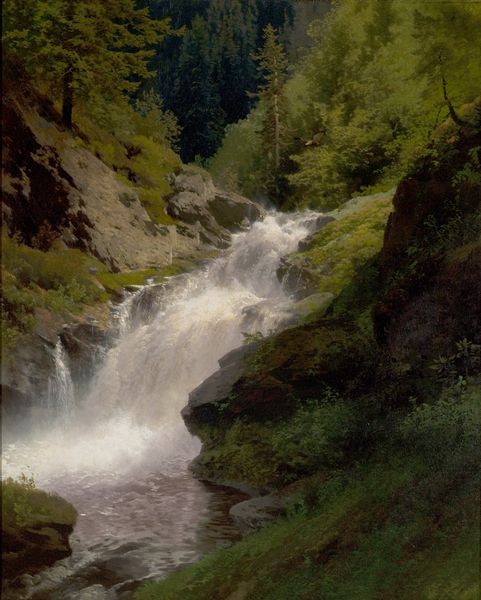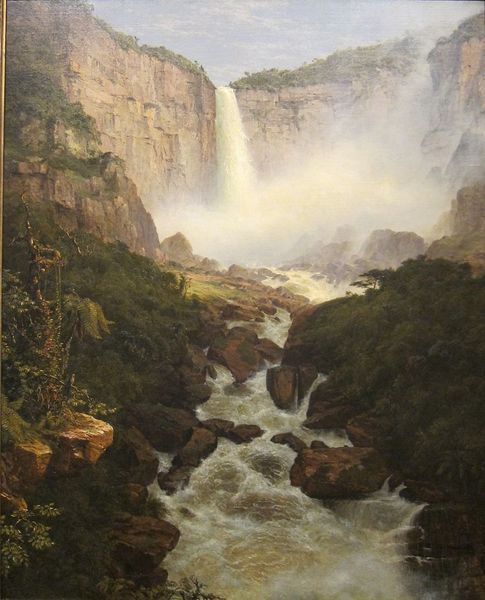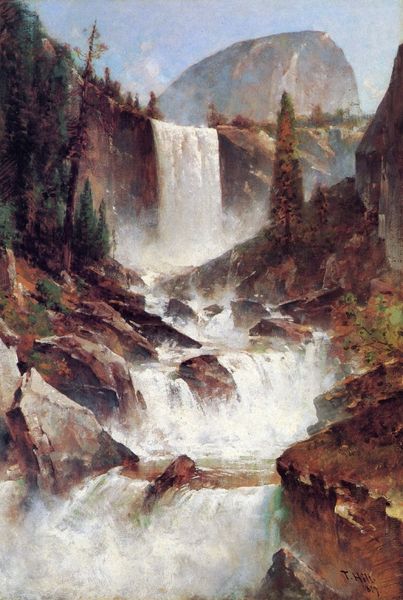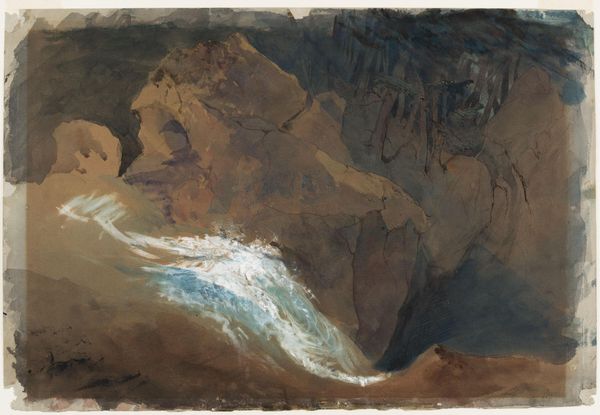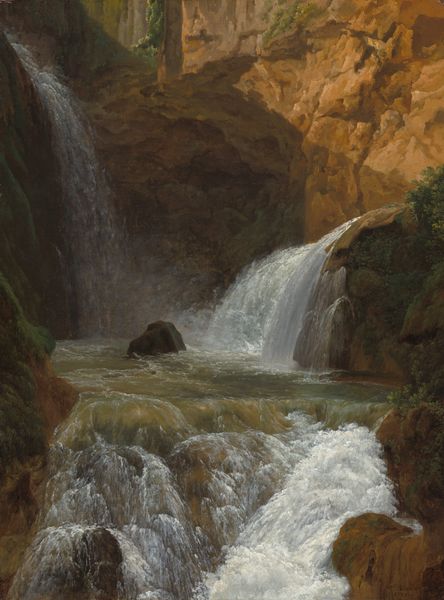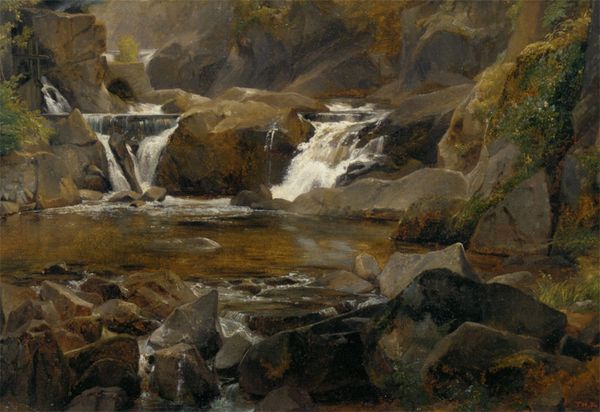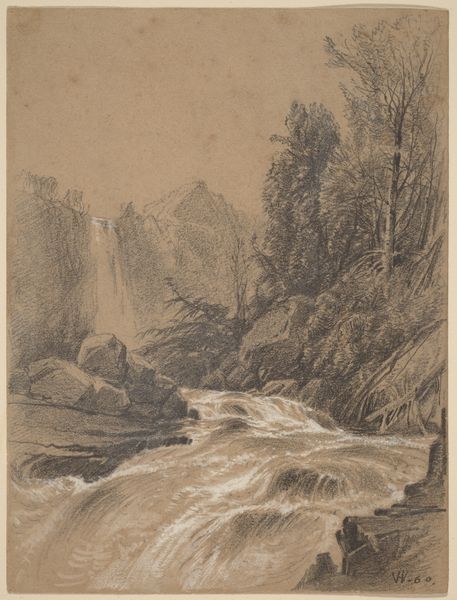
Dimensions: sheet: 31.8 × 23.7 cm (12 1/2 × 9 5/16 in.)
Copyright: National Gallery of Art: CC0 1.0
Henri-Joseph Harpignies rendered "A Cascade in the Mountains" with watercolor on paper in the late 19th or early 20th century. In France at this time, landscape painting held a prominent position in the art world, reflecting a broader cultural interest in nature and the countryside, partially as an escape from industrialization. Harpignies, though not an official member of the Barbizon School, shared their commitment to painting en plein air, or outdoors, directly from nature. Harpignies' chosen medium and subject reflects the changing dynamics of art institutions, where watercolor was gaining recognition. The play of light on water exemplifies his skill in capturing atmospheric effects. The absence of overt social commentary may reflect the artist's intent to offer aesthetic pleasure rather than challenge the status quo. Yet, his choice of landscape, devoid of human presence, hints at a critique of urban life. Understanding Harpignies requires examining exhibition records, art criticism, and the biographies of artists who, like him, navigated the evolving art world.
Comments
No comments
Be the first to comment and join the conversation on the ultimate creative platform.
